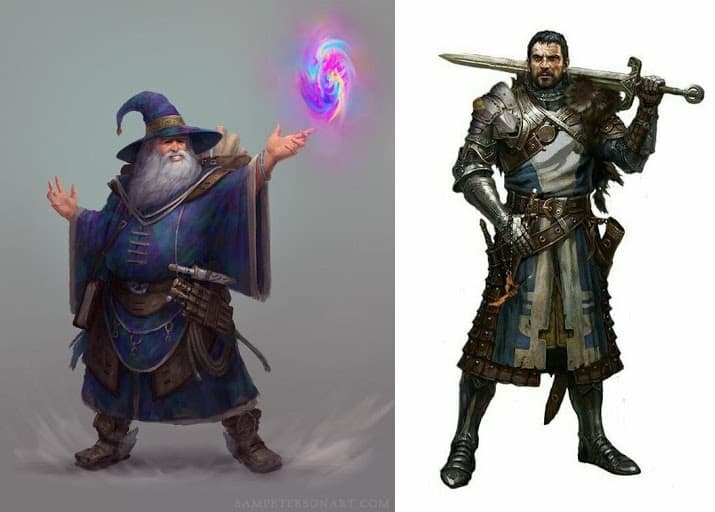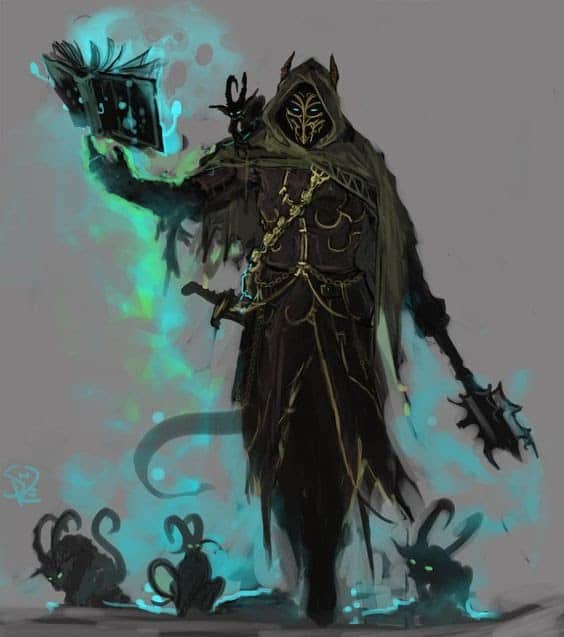D&D 5e: Spellcasting vs Martial Classes

D&D 5e: Spellcasting vs Martial Classes
What are Spellcasting Classes?
Like every iteration of Dungeons and Dragons before it, 5e offers players a variety of spellcasting and martial classes. Spellcasters encompass all classes that rely primarily on the use of magic in both combative and utilitarian situations. The most spellcasty of the spellcasting classes are the Wizard and the Sorcerer. Other spellcasters include Bards, Druids, and Warlocks. Pretty straightforward, right?
What are Martial Classes?
Martial classes, by contrast, rely primarily on the use of weapons and physical prowess. On the martial spectrum we find Fighters, Barbarians, Clerics, Monks, Paladins, Rangers, and Rogues. Basically, if your first instinct when confronted by a particularly obstreperous goblin is to punch it in the face, stick it with an arrow, or cleave it in half with your greatsword, you’re probably playing a martial class.
Spellcasting and Martial Hybrids
Many classes in 5e combine a variety of martial and spellcasting abilities. Bards, for example, have few damage-dealing spells relative to other spellcasters. Instead, they use their magic to manipulate, charm, and maneuver enemies about the battlefield.
Druids also make good use of martial abilities. This is particularly true for Druids who choose the Circle of the Moon, which allows them to transform into higher-level creatures than their Circle of the Land counterparts. Notably, if a Druid loses hit points while in their Wild Shape form, their hit points in their normal humanoid form remain unaffected. This gives them a substantial boost to their overall hit points and makes them ideal damage-sponges.
Clerics and Paladins both make use of divine abilities to augment their already intimidating martial prowess. Clerics perhaps use more magic than Paladins, but both are granted divine magic with which they can heal their friends and smite their foes.
Rangers and Rogues can also make great martial/spellcasting hybrids. Rangers are automatically granted spells at third level, and Rogues who choose the Arcane Trickster archetype are granted access to certain Wizard spells from the schools of Enchantment and Illusion.
My Favorite Spellcasting and Martial Classes
When playing a spellcaster, versatility is important. To that, the Warlock takes the proverbial cake. Their spells lists are riddled with unique and insanely useful spells such as Spider Walk, Banishment, and Arcane Gate. Their Eldritch Invocations allow them to cast certain spells at will, a feature which will have other spellcasters salivating.

My favorite martial class is the Monk. There’s something appealing to me about their self-reliance. They don’t need armor or weapons to be dangerous fighters, and their Ki grants them some of the most unique abilities in all of 5e, such as the power to harness the elements and step through shadow, or turn invisible altogether.
I hope you enjoyed my breakdown of Spellcasting vs Martial classes! You can always take a deeper dive into the various Spellcasting and Martial classes on the Dnd Beyond website, or in your Player’s Handbook. Happy adventuring!



